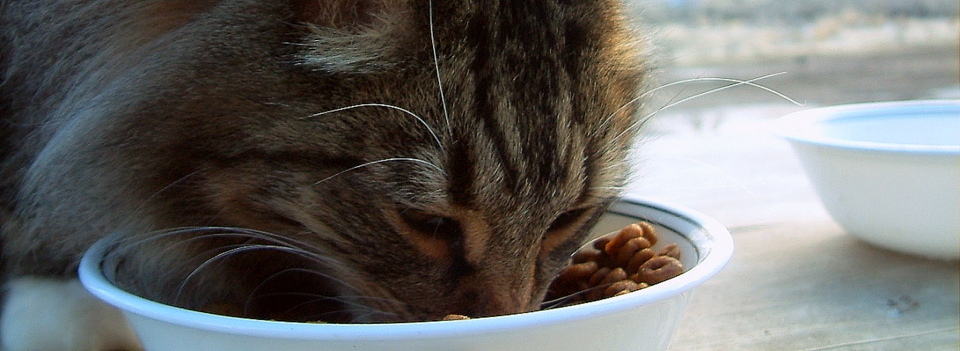
Why dry food is not a healthy option for cats
We like to offer our readers a fair and balanced view on feline wellness. If you believe that dry food is perfectly fine to feed cats, this guest post might make you think twice.
feline wellness. If you believe that dry food is perfectly fine to feed cats, this guest post might make you think twice.
Our guest post this week is by holistic pet nutritionist Jodi Ziskin. Visit her website Holistic Healthy Petsor listen to her radio show on Radio Pet Lady Network .
Visit her website Holistic Healthy Petsor listen to her radio show on Radio Pet Lady Network .
Why dry food is not a healthy option for cats
by Jodi Ziskin
Dry food has long been marketed to us as the cornerstone of a balanced and complete diet. Somehow, the corporations (Colgate-Palmolive, Procter & Gamble, Del Monte, Nestle Purina and Mars own nearly all of the major pet food companies) have convinced the public that processed foods are more beneficial for pets than whole foods.
The way I see it, dry food is not food; it is a highly processed food product that is mass produced (12 million pounds of dry food are produced every hour) with high profit yields. Pet Food is a $15 billion a year industry. Before I address why dry food is not optimal for cats, it is important to first understand what cats need – meat (muscle and organ), fat, bone, a small amount of pre-digested vegetation and water. Yep, that’s it. Our kitties are obligate carnivores.
Of course cats have adapted. They can survive and even thrive without eating rodents and lizards and birds. However their digestive tract is still that of a carnivore. Cats are designed to use meat and fat for energy, not carbohydrates. They have no biological need for grains or starches, nor can they properly digest them. All dry foods – even the grain-free varieties – contain a form of starch. Starch is what holds the food together. Most also contain animal by-products, which are basically parts of the animal that are not muscle or organ meat. So far it doesn’t sound like a natural diet for cats, right?
On average, dry food contains around 12% moisture. Compare that with the 75 – 80% liquid content in natural prey, raw, homemade, and canned foods.A cat drinking copious amounts of water can consume around 50% of what is available in the aforementioned food forms. This is a far cry from what they actually require. Remember – hydration includes electrolytes like potassium, magnesium and calcium as well as many micro-minerals. What does this all mean? Many cats on an all-dry diet become chronically dehydrated. Keep in mind that cats naturally have a very low thirst drive and will often not even drink water until they are 75% dehydrated.
Dehydration is one of the primary enemies of a cat’s body. When a cat consumes dry food, it forces more internal fluids, including increased liquid and stomach acids, to be released into the stomach to help break down the food. This can prematurely deplete certain stomach acids, making it increasingly difficult for the digestive tract to work properly. When the digestive tract can’t do its job, it paves the way for disease and discomfort. Additionally, a lack of proper liquid consumption coupled with the loss of body fluid reduces the blood volume. When this happens, all body parts suffer. The deficiency in fluid means that the movement of blood through the veins and arteries slows. It also affects the lymph system.
According to Dr. Patrick Mahaney, VMD, “Thick blood and lymphatic fluid inefficiently perfuse and drain body tissues, resulting in lack of oxygenation and nutrient delivery, reduced toxin removal, and deficient white blood cell activity in all organ systems.”
A dry food diet is often a major contributor to obesity, diabetes, irritable bowel syndrome/disease, constipation, kidney disease, liver disease, joint problems, including arthritis, skin issues, including dry or flaky skin, hot spots, and itchy skin and more.
Where and How Dry Food Is Made
Most dry food – including the ones that say premium or natural or veterinary formula or prescription – are manufactured at three processing plants. That is why when there is a food recall, it often involves more than one brand. There are only a handful of small companies that actually make their own food in their own facility. By the way, the terms ‘prescription’ and ‘veterinary formula’ are trademarks, not designations (the more you know!).
Dry food is manufactured using very high heat. This destroys many of the nutrients found in the raw ingredients. Some estimate that 50% of the amino acids are destroyed as well as nearly 100% of the vitamins and minerals. In order to meet AAFCO requirements, synthetic vitamins and minerals are often added back in. The thing is, cats do not assimilate synthetics very well. In addition, the once healthy omega-3 fatty acids in the food also become rancid during the cooking process. Of course, the heat also eliminates most of the moisture content.
Transport and Storage
Adding to the many reasons why dry food is simply not optimal for cats is how it is shipped and stored. Many companies transport the bags of food in trucks without air conditioning. The products are then warehoused in facilities without climate control. Have you ever opened a bag of dry food only to find small bugs or mold? This is why. Of course, once opened, dry food becomes stale very quickly. Even if you store it in a sealed container, every time the food is exposed to oxygen, it starts to break down.
Why Pets Love Dry Food
In order to attract dogs and cats to their food, pet food manufactures add flavor enhancers. This is a spray of fats and natural flavorings, including MSG, which is added as the food cools. These flavorings fool your carnivore’s brain into believing the food contains more protein than it really does. The flavorings actually cause your cat to become addicted to the food! Artificial colorings are also added to help the food become more visually appealing to YOU (trust me, your pet does not care what color his/her food is).
Because of the lack of nutrients, cats will eat more dry food just to try to meet their nutritional requirements. Cats who have access to free feeding will often eat out of boredom. Most dry foods also contain grains*, which have no place in the diets of carnivores. When the body tries to digest and assimilate them, it causes a spike in blood sugar. In order to bring the blood sugar back to normal levels, the pancreas releases insulin. What the insulin can’t handle then gets stored as fat in the body.
*Note: in many commercial foods, grains such as wheat, corn, and soy that have been condemned for human consumption due to excessive pesticide residue can be used without limit in food intended for animals.
Dry Food and Food Allergies
There are many disadvantages of feeding a cat the same food day after day, month after month, year after year, including nutritional deficiencies (a subject that requires its own blog). One very common issue that arises is that a cat can build up an intolerance or allergy to the food. Chicken is the number one allergen for cats. It may seem to come out of nowhere, but can actually build over time.
Dry Food And The Clean Teeth Myth
Simply put, dry foods do not keep teeth clean. That’s like telling you to eat granola or crackers and not brush your teeth! Starches from dry food adhere to teeth and become the breeding ground for bacteria (plaque). As for those dry foods that claim to be dental formulas, the ingredient most use to decrease tartar build up is sodium hexametaphosphate. This is a man-made polymer that is used in making soap, detergents, in water treatment and in metal finishings. Yummy.
The best way to keep the teeth of cats clean is to provide them with raw meat to chew on or raw bones after meals. If that isn’t your cup of tea, try brushing your cat’s teeth. You don’t even need paste (but if you choose to use some, be sure it is toothpaste made especially for pets). There are also liquid and powder enzyme-based products that can me mixed into food or water that works to decrease tartar build up. It is important to have your vet check your cat’s teeth during their annual exam. Most will need a professional cleaning from time to time. There are now many places offering non-anesthesia dental cleanings.
BUT My Cat Won’t Eat Anything Except Dry Food!
I have heard this many, many times. I won’t lie; it takes time and patience to transition a cat to a healthy diet. Remember, your cat is essentially addicted to the flavorings added to dry food. This is by design. If your cat simply loves to crunch on dry food, then think of serving it as more of a treat or side dish – much like you having chips with a nice sandwich. Try to keep dry food to less than 10% of your cat’s overall diet.
There are very few dry foods I ever recommend and always as an accompaniment to a high quality diet. All are from companies that use human grade ingredients, that do not include by-products or rendered ingredients; that cook at lower temperatures and for less time. Most of these companies recommend their dry food as part of a rotation diet, meaning alternating raw, canned and dry food. Providing a whole food, species appropriate diet is a proactive way to help cats stay healthy. Spending a little more on great food now can save a whole lot of money on vet bills later on.
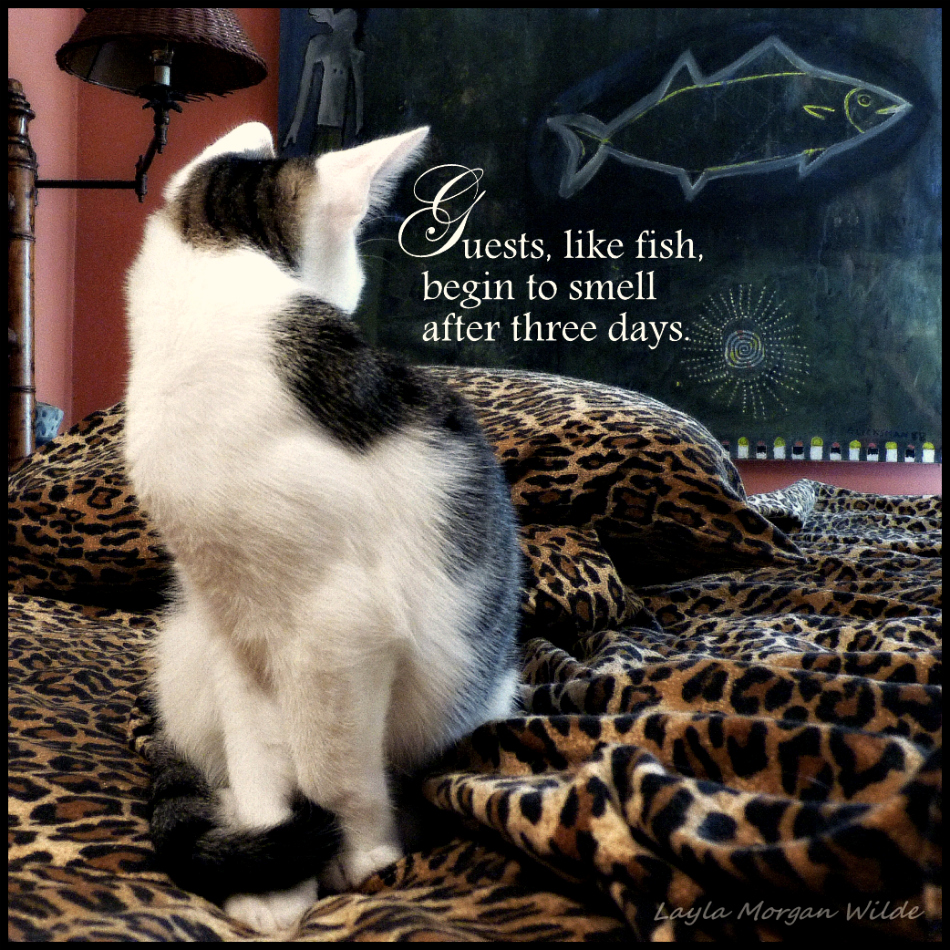
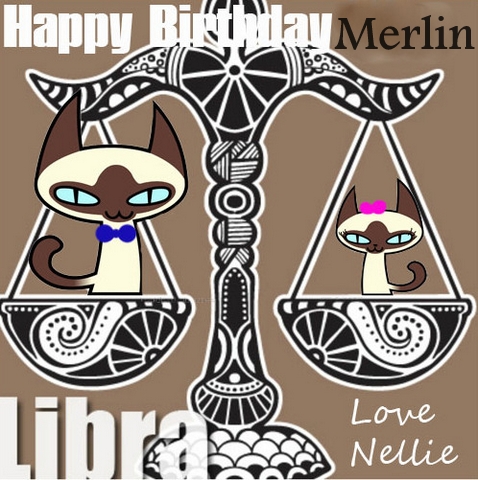

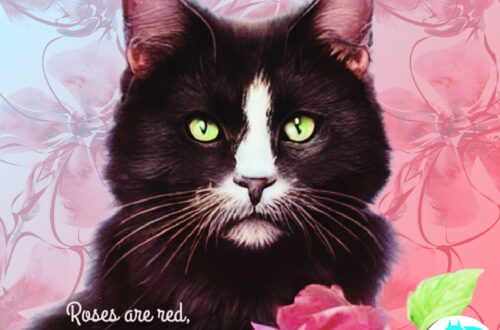
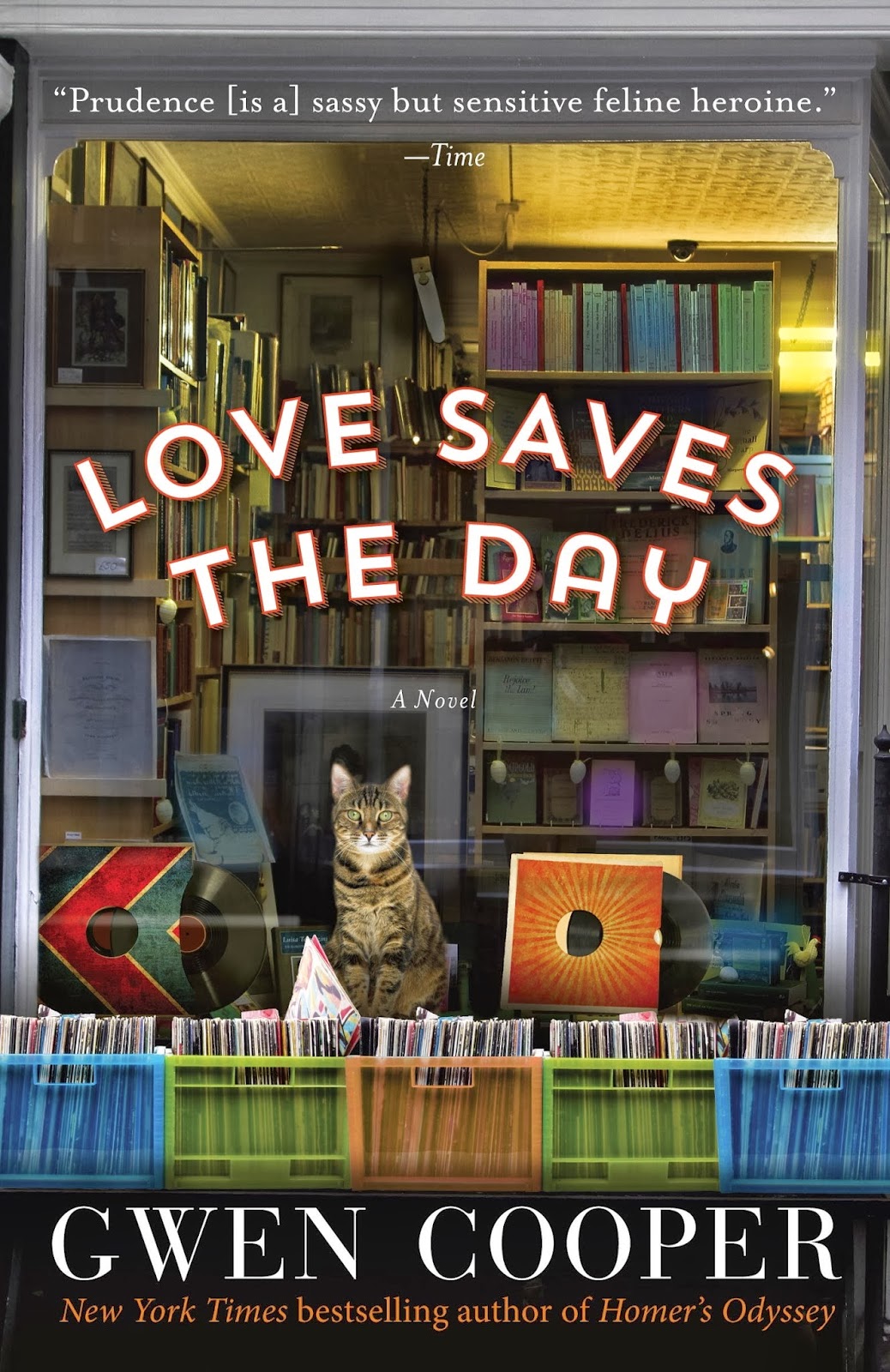
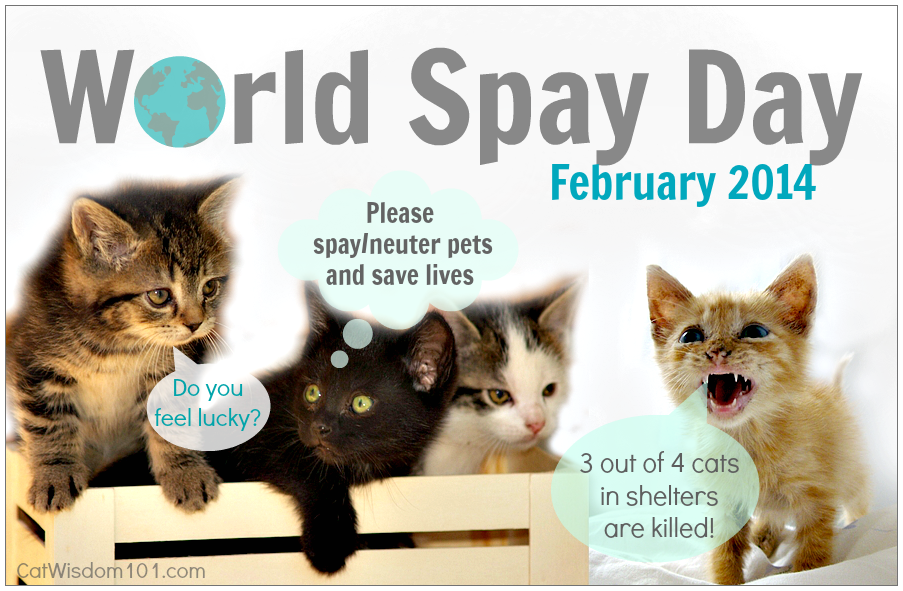
22 Comments
Matt - Lightroom Presets
We used to only give our cats dry food but like this article says, it wasn’t that great for them so now we mix it up a bit more and it seems to work well for them.
Layla Morgan Wilde
Hi Matt, good luck with you new venture! Did you get my email?
Kjelle Bus aka Charlie Rascal
I eat wet-food in the morning and in the evening and in midday I eat some dryfood.
That is if mom is not home , if mom is home I eat wetfood in midday too 🙂
My mom put dryfood in my activityball now and then when she is of to work , so I have to work for my food.
NO I have NO weight problem !
Maxwell, Faraday & Allie
We could not agree more – wet food is the best! (Now could someone pleeeease inform Maxwell of this? We have tried and tried to get this bad boy to convert. Oy!)
Nerissa's Life
Yup, totally agree. We get dry for snackin’ but the peeps always have moist for us for our meals. Gotta get the liquids into us, they say.
Purrs,
Nissy
Anonymous
What an excellent, excellent post. I firmly believe everything you’ve said. I am under the impression that cats didn’t get kidney illness or crystals before Purina introduced cat chow in the early 60s. Growing up, our cats ate chow and we also gave them liver and eggs. The females did fine. Our boy, not so well.
I had a female cat I gave wet food and dry food and she lived to be 20.
However, my SIL gave commercial dry food to her boy and girl cat and the boy developed kidney disease and died last year.
My two boys, Cheddar and Mao, are almost 12 and Cheddar developed crystals a year ago, and we paid a lot to the excellent Vescone.
http://www.vescone.com/
Now, I feed them 70 percent of the prescription wet food and 10 percent of the prescription dry food and about 20 percent wet Friskies.
It really is true that giving your cats commercial food of any kind is like eating at Mickey D’s all the time.
In my life, I am mostly a whole-grain, fresh fruit and veggie salad and smoothie person (Though this week I have perfected the quick-sear filet mignon.)
Thanks so much for this excellent, excellent post, Dr.
Kathryn
Anonymous = Kathryn.
CATachresis
This is such an informative helpful post, Layla. I notice in rescues and shelters here, cats nearly always are given just dry food!! Austin eats mostly wet now, but still some dry, but I am trying to wean him off completely. He’s never had a weight problem, but have noticed recently he has started to look a bit more portly!
meowmeowmans
Thanks for sharing this really important and interesting information. It’s really food for thought (no pun intended)!
Rosie Bescoby
Interesting article. The same can also be said for dog food. Can I ask what the explanation is for dogs and cats that live a long and healthy life on kibble/dry diets?
Cathy Keisha
Excellent post. I had read much the same information recently and have been commenting as such whenever someone reviews dry food—speaking of which I just entered your contest for dry kibble, MOL. Oops. I get a little in my dish at night. I’m gonna Pin this article right next of the other one.
Katie and Glogirly
Awesome subject for a post, Layla!
When I brought Katie in for her lasts Vet appointment, my Vet was SO excited to share some of the newest, cutting edge info out there on feline nutrition. It’s her area of specialty and she had just returned from a conference devoted to that the day before. In a nutshell, she was thrilled that headway was being made with pet food companies, nutritional requirements, etc… and the BIG news she was excited to share with me was a recommendation that we eliminate all dry food.
I had already gotten Katie to accept 1/2 and 1/2 some time ago. It was instrumental in her successful weight loss. And now both she and Waffles seem to be thrilled with their no-dry diet.
We’re believers!
GG
Oui Oui
Our mom feeds us wet food and leaves out dry food for us to munch on. A while ago she switched from a dry food she thought as “high end” to a holistic one that contains no grains or by products and we lost weight without being on a diet. Best yet, that fussy girl, Oui Oui, pushed the other kitties out of the way the first time the mom out it out.
Oh Merlin, we worry our birthday comment was lost, maybe its in the spam filter? Julie was there, but purrhaps you didn’t notice her because of all the beautiful lady cats following you around. She was trailing around behind Oui Oui. We would never have missed such an important day. We are so proud to know you! And what an important milestone!
Skeeter and Izzy
Thank you for the great info. We only do a small amount of dry food here and it is not from the “Big Name” companies either.I don’t even feed my ferals dry.
Luvs skeeter and Izzy and the Feral Gang
Brian
I tend to agree, but am not convinced that genetic science and evolution of the feline DNA fully supports some of the arguments. But I do love my wet and high quailty meals.
Tracy Lee
great article ! Diet is the brick and mortar of pet health.A good veterinarian explains the basics of how to properly feed your pet need.if you have pet related any query then feel free to contact us on
westflamingo.com
easy rider
Thanks for this great post. I never read so much about things what they put in our food (thing it counts for dog food too).
da tabbies o trout towne
grate post two days guys…..thanx for sharin de info…we try R best two practiss holistic round TT; we can see de kibble iz gonna knead a second N thurd look in two !!!
Angel Abby
We do put out one cup of crunchies for now 4 cats. It is not always eaten by the end of the day. But we do understand the implications. This was a very well done article and offers a good reason to only give dry food as more of a treat not the main meal. Thank you for sharing.
Sometimes, Cats Herd You
Good explanation. Some of the head peep’s friends don’t understand why she’s pulling her hair out to try to get us to transition to canned food right now, and showing them this post will be a good way to help explain it.
Sparkle
Great post! I think she explained clearly so that humans will understand why they need to go out and bring home fresh kill for us kitties. Or at the very least, a quality, grain-free canned cat food.